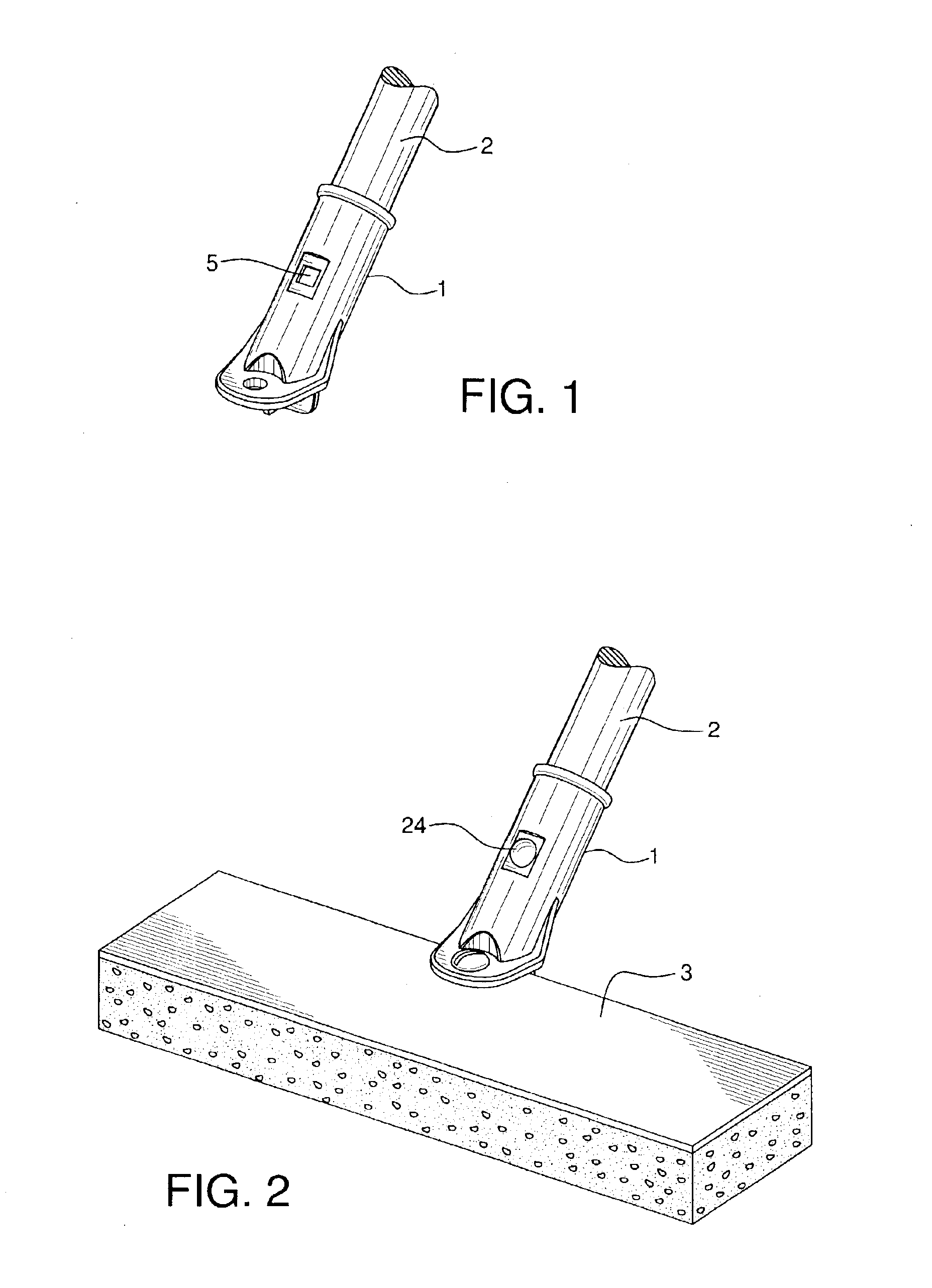Handle connector
a technology of handle and connector, which is applied in the direction of couplings, rod connections, manufacturing tools, etc., can solve the problems of limited number, difficult to keep these connections from loosening during use, and the handle coming loose from the head, etc., and achieves the effect of convenient insertion, simple manufacturing, and easy fabricated
- Summary
- Abstract
- Description
- Claims
- Application Information
AI Technical Summary
Benefits of technology
Problems solved by technology
Method used
Image
Examples
Embodiment Construction
Connector 1 is formed as an integral, unitary body, optimally of die-cast construction. It is substantially cylindrical in configuration to accept handle 2. Connector 1 has a central section 4 and distal ends 6 and 8. End 6 is open to receive the end of handle 2. The other end 8 of connector 1 comprises an extension which extends outwardly and is configured to mate with head 3 of a broom, mop, or other manual tool. Openings 5 and 7 are configured to receive an attachment device, such as bolt 24, for securing handle 2 via connector 1 to head 3.
Connector 1 further comprises, at central section 4, floating web section 10 which includes substantially flat section 12 on the outer surface of the connector, slots 14 and 16 which laterally flank section 12, and opening 5. Opening 5 is in alignment with opening 7 and is located on the front, outer surface of connector 1, opposite flat section 12. Web section 10 is formed so as to allow flexure of connector 1 at flat section 12, when a compre...
PUM
 Login to View More
Login to View More Abstract
Description
Claims
Application Information
 Login to View More
Login to View More - R&D
- Intellectual Property
- Life Sciences
- Materials
- Tech Scout
- Unparalleled Data Quality
- Higher Quality Content
- 60% Fewer Hallucinations
Browse by: Latest US Patents, China's latest patents, Technical Efficacy Thesaurus, Application Domain, Technology Topic, Popular Technical Reports.
© 2025 PatSnap. All rights reserved.Legal|Privacy policy|Modern Slavery Act Transparency Statement|Sitemap|About US| Contact US: help@patsnap.com



